
For many small business owners, the creative aspects of running your own business come easy. If you’re a soapmaker, choosing the ingredients, design, color and fragrance of products is fun! But after your products are created, it’s time to sell. This is when small business owners must decide how much to charge for the product, and that can be a little confusing. It’s important to understand there is no black and white guide to pricing your products. Every business owner will price their products differently depending on a number of factors, including the distribution model, fixed costs, raw materials, labor and more.
Before we dive into it, keep in mind these numbers are very simple and are meant to give you a place to start. In business, there are many small costs and things to consider that are unique to you. These numbers may also seem unrealistic for your situation; your costs may be much higher or lower. Adjust the numbers in the examples to fit your costs. For example, the overhead costs of a soap storefront in Seattle will be much higher than a soaper selling their products via Etsy. Click here to learn more about where to sell your products. To help make the process of tracking your costs a little easier, download this free Pricing Your Soap Worksheet.

Fixed Overhead Costs (Indirect Costs)
First, let’s discuss some basic overhead costs incurred by any small business (be it soaping or clothing design or pottery throwing). These are things like heat, electricity, phone bills etc. Overhead costs are sometimes referred to as indirect costs or fixed costs. If you are like many small scale soapmakers, you work out of your own home or apartment. To get a true overhead cost for when you do get past the start-up phase, your soap company should be paying you rent (but for tax purposes, only if you’ve allocated a room solely for soapmaking).
Generalizing greatly, renting a room will be $200 (Mortgage of $800 divided by 4). Next, you have your phone/internet bill, heating, electric, water, sewer and garbage. (NOTE: When figuring out your own cost analysis, use your OWN numbers). Some of indirect costs occur on a monthly basis like rent, phone and water. Indirect costs may also include costs that will vary from month to month, including marketing materials, design work, website maintenance. Because of this, your indirect costs may fluctuate greatly from month to month. For purposes of example, I’ve inserted some numbers which I believe are average for a month of soapmaking. This list includes fixed costs such as postage, pans, spoons, an extra burner, shelves etc. When we initially built our soap room in the Soap Queen lab, we added shelving, cabinets, a portable single-burner range, and bought new equipment. All together, this added up to about $400.00.
 Indirect costs include setting up your soaping area, or even renting out a separate space. This gorgeous setup belongs to Shana of Bathvs, click here to learn more about her business.
Indirect costs include setting up your soaping area, or even renting out a separate space. This gorgeous setup belongs to Shana of Bathvs, click here to learn more about her business.
Let’s not forget insurance! This is the an essential you should have before starting any soap business. On average, this will run about $20.00-$40.00 per month. If you’re looking for business insurance, this post is full of resources. In this case, I’ve also factored in soap making molds. If you prefer, you can factor the molds into the raw material cost (direct costs) but since they last longer than 1 use, it makes more sense to me to put it in here. Giving that ‘Extras’ category of $70 a month means you can replace things that break or wear out when you need to.
| Rent | $200 |
| Phone | $70 |
| Water/Sewer | $20 |
| Electricity | $40 |
| Insurance | $20 |
| Extras (shelves, spoons, molds, postage, etc.) | $70 |
| TOTAL | $420 |
Direct Material Costs (Direct Costs)
After you’ve calculated the indirect business costs for the month, it’s time to move onto the material and labor costs. These costs are sometimes referred to as the direct costs. For many soapers, the direct cost of each batch of soap will vary. This is because each batch will contain different ingredients. The examples below use an easy recipe with a trinity of oils with one scent and one color.
I’m going to assume that I’m using the 5 Pound Mold with Sliding Bottom, which holds 76 ounces of soap. Below is the recipe that will produce 76.67 ounces of soap. For this recipe, you would need about 2.5 ounces of Energy Fragrance Oil for a light/medium scent. You can use the Fragrance Calculator to find out how much fragrance or essential oil you need for your recipes. Now, let’s figure out how many bars are in one batch. This amount will depend on how large or small you cut your bars. Each loaf weighs 76 ounces. If I cut each batch into 3.8 ounce bars, I can get 20 bars from each batch.
| Recipe in 5 Pound Mold | |
| Coconut Oil (33.3%) | 17.33 oz. |
| Olive Oil (33.3%) | 17.33 oz. |
| Palm Oil (33.3%) | 17.33 oz. |
| Sodium Hydroxide Lye | 7.51 oz. |
| Distilled Water | 17.16 oz. |
| Energy Fragrance Oil | 2.5 oz. |
| Sunset Orange Mica | 0.1 oz. |
| TOTAL YIELD | 76.67 oz. |
Now that I know how much of each ingredient I need to produce one batch of soap, I can calculate the cost per batch. But, this cost will vary depending on what size of ingredients you purchase. When you buy larger quantities of ingredients, the cost per pound/ounce is reduced. For example, most Bramble Berry fixed oils are sold in 1 pound, 7 pound and 35 pound options. With each size increase, the cost per pound/ounce decreases. For example, 1 pound of olive oil is $4.30. This breaks down to about $0.27 per ounce. The price per pound reduces when you purchase 35 pounds of olive oil; 35 pounds of olive oil costs $107.80, which breaks down to $3.08 per pound of olive oil, or 0.19 per ounce.
Buying larger amounts of ingredients is more cost effective in the long run but costs more upfront. Let’s take a look at how the price per batch breaks down when you buy the ingredients in bulk sizes. The amount of colorant you need will vary depending on personal preference; for this example I estimated you need about 1 tsp of Sunset Orange Mica, which weighs about 0.1 oz. The chart also includes sodium hydroxide lye, which is not easily available in bulk sizes due to shipping/freight restrictions. The price of distilled water will vary depending on your source; 1 gallon of distilled water at Walmart is $0.88 so I calculated an average of $1.
| Ingredients Needed | Bulk Price | Price per oz. | Usage in 76 oz. Batch | Cost Per Batch |
| Coconut Oil | $66.50 (35 lbs, 560 oz.) | $0.1187 | 17.33 oz. (33.3%) | $2.06 |
| Olive Oil | $107.80 (35 lbs, 560 oz.) | $0.1925 | 17.33 oz. (33.3%) | $3.34 |
| Palm Oil | $54.25 (35 lbs, 560 oz.) | $0.0968 | 17.33 oz. (33.3%) | $1.68 |
| Energy Fragrance Oil | $112.80 (5 lbs, 80 oz.) | $1.41 | 2.5 oz. | $3.53 |
| Sunset Orange Mica | $30.00 (16 oz.) | $1.88 | 0.1 oz. | $0.19 |
| Non Bulk Prices | ||||
| Sodium Hydroxide Lye | $10 (27 oz.) | $0.37 | 7.51 oz. | $2.78 |
| Distilled Water | $1 | $.0078 | 17.16 | $0.13 |
| TOTAL COST: | $382.35 | COST PER BATCH: | $13.71 | |
| COST PER BAR (20 BARS): | $0.69 |
In the example above, if you buy all the ingredients at bulk pricing, the material cost for one batch is $13.71. If one batch creates 20 bars, this means I need to charge $0.69 per bar to cover my material costs. Now, let’s take a look at the cost per batch if you do not buy in bulk in the chart below. I’m still going to buy larger sizes of Energy Fragrance Oil which is 16 ounces, and the 7 pound bags of fixed oils. In this example, my cost per batch goes up to $16.38 and my cost for 20 bars is $0.82.
| Ingredients Needed | Price | Price per oz. | Usage in 76 oz. Batch | Cost Per Batch |
| Coconut Oil | $16.80 (7 lbs, 112 oz.) | $0.15 | 17.33 oz. (33.3%) | $2.60 |
| Olive Oil | $29.05 (7 lbs, 112 oz.) | $.2593 | 17.33 oz. (33.3%) | $4.49 |
| Palm Oil | $13.93 (7 lbs, 112 oz.) | $.1243 | 17.33 oz. (33.3%) | $2.15 |
| Energy Fragrance Oil | $25.15 (16 oz.) | $1.57 | 2.5 oz. | $3.93 |
| Sunset Orange Mica | $3 (1 oz.) | $3 | 0.1 oz. | $0.3 |
| Sodium Hydroxide Lye | $10 (27 oz.) | 7.51 oz. | $2.78 | |
| Distilled Water | $1 | 17.16 | $0.13 | |
| TOTAL COST: | $98.90 | COST PER BATCH: | $16.38 | |
| COST PER BAR (20 BARS): | $0.82 |
Buying ingredients in bulk is more cost effective, but it may not be the right choice for your business. Buying in bulk is more expensive upfront. But, buying your ingredients on a batch by batch basis is not very cost effective for business. Buying ingredients in the smallest sizes (1 pound of fixed oils for example) increases the cost per ounce. If you are a hobbyist and don’t plan on making a profit, this isn’t something you need to be concerned with. Deciding how much of each ingredient to buy is a choice every small business owner must make. The main factor is how many batches of soap you can realistically produce and sell.
In the example of bulk ingredients and pricing above, you have enough fixed oils, colorant and fragrance oil to make 32 whole batches of soap. This means you will be able to produce 640 bars in (32 batches x 20 bars = 640 bars). Keep in mind you will need to purchase more lye and distilled water to produce this many batches. On the flip side, if you buy your ingredients in smaller sizes using the example above, you have enough oils to create 6 batches of soap, or 120 bars. If you sell 120 bars a month, the indirect costs and labor costs will increase the cost of each bar quite dramatically compared to if you are producing and selling 640 bars. In this example, the indirect costs this month are $420 (shown above). If you sell 120 bars that adds $3.5 to each bar ($420 divided by 120 bars equals $3.50). If you produce 640 bars, that adds $.65 per bar. Most soapy small businesses produce an amount of soap that’s somewhere in between these amounts.
 In general, buying in bulk and producing larger quantities of soap is more cost effective and results in more profit than buying and producing smaller batches.
In general, buying in bulk and producing larger quantities of soap is more cost effective and results in more profit than buying and producing smaller batches.
It’s also important to consider that fixed oils do have a shelf life. If you don’t think you’ll use that much oil within the shelf life, buying in bulk may not be the right choice for your business. You would hate for your oils to go rancid before you’re able to use them. The decision to buy in bulk may also be affected by the amount of storage space you have for ingredients.You also need to consider your shipping costs for the materials. One method of factoring in shipping costs (as explained by Lela Barker in this blog post) is to look at your invoices and determine the average percentage of your shipping costs, then factor that into your cost calculation.
Labor Costs
Labor also figures into this equation. How much do you want to pay yourself? $6 per hour, $15 per hour? For this example, we will use $15 per hour which is a healthy hourly wage (especially since the satisfaction of being self employed makes many want to work for themselves for free!) For this example, we will use 30 minutes to prepare the raw materials (scoop, measure, and make up your recipe). The amount of time to make the soap will vary, but let’s give ourselves 15 minutes of soaping time and 15 minutes of clean up. That’s a total of one hour per batch of soap. In this example, each batch creates 20 bars. That means the labor costs per bar of soap is $.75. Do keep in mind this is a very simple way of calculating labor costs. Don’t forget to pay yourself when working on your website, packaging your bars, making sales calls, answering emails, etc.
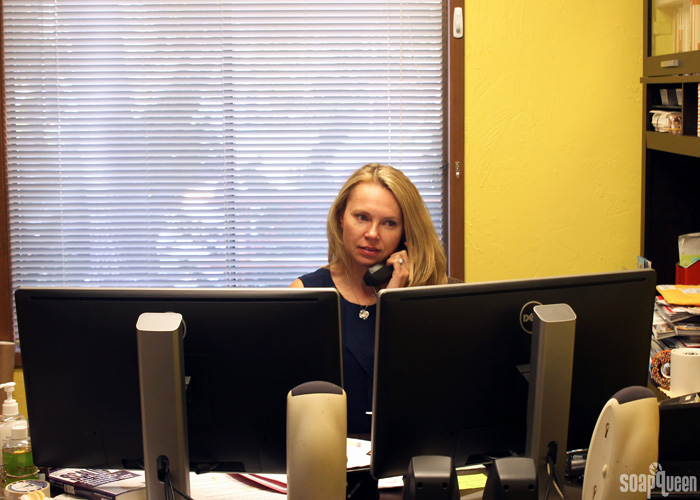 Don’t forget to pay yourself for all that hard work! This should include time creating soap as well as answering emails, or working on your website.
Don’t forget to pay yourself for all that hard work! This should include time creating soap as well as answering emails, or working on your website.
TOTAL
Now, let’s add all our costs together. Our direct material costs to produce the bar are $0.69 per bar when buying in bulk. The labor cost per bar is $.75. The indirect costs for the month were $420. If you were to sell all 640 bars that you produced, the indirect costs add $0.65 per bar of soap.
Total Costs Per Bar (640 bars) with Bulk Pricing:
Direct Material Costs: $0.69
Indirect Costs: $0.65
Labor Costs: $0.75
TOTAL: $2.09
On the flip side, let’s break down the cost if you were to buy your ingredients using non-bulk pricing. With this example, you are able to create 6 batches of soap which creates 120 bars. The indirect costs for the month were $420. If you were to sell all 120 bars that you produced, the indirect costs add $3.5 to each bar.
Total Costs Per Bar (120 bars) Non-Bulk Pricing:
Direct Material Costs: $0.82
Indirect Costs: $3.5
Labor Costs: $0.75
TOTAL: $5.07
As you can see, selling 120 bars vs. 640 bars per month greatly affects your profit on each bar due to your overhead. Most soapy businesses will produce and sell a number somewhere in between these amounts. So, let’s look at one more example! Let’s assume you purchased your ingredients using bulk prices. But, you only produced and sold 360 bars of soap which is 18 batches of the recipe above. You will have plenty of ingredients left over for next month. The indirect costs for the month stay the same ($420). If you created and sold 360 bars, your indirect costs would add on $1.17.
Total Costs Per Bar (360 bars) Non-Bulk Pricing:
Direct Material Costs: $0.69
Indirect Costs: $1.17
Labor Costs: $0.75
TOTAL: $2.61
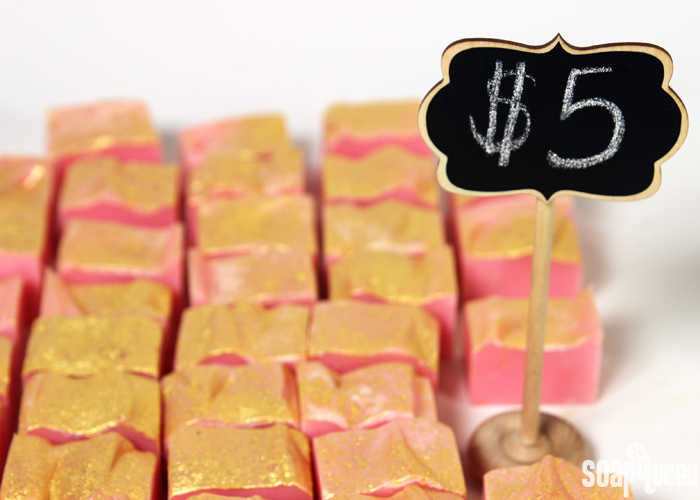
Once you know how much you need to charge per bar to break even, you can decide how much you’d like to add onto the price to get a profit. But how do you find out what the final price should be? How much profit you’d like to receive from your products is ultimately up to you. There are several different pricing strategies, as described by Lela Barker of Lucky Break Consulting in this blog post and listed below. Whatever strategy you choose, I recommend staying consistent.
- The Multiplier Strategy: This strategy involves multiplying your costs by a specific value to get your final price.
- The Percentage Strategy: This strategy involves multiplying your costs by a percentage to get your final price.
- The Fixed Amount Strategy: This strategy involves adding a fixed amount to every item to reach your price.
If you’re a business owner, you know the importance of carefully tracking your costs and profits. It can be time consuming and tedious. But, I’ve seen small businesses fail because they underestimate the hidden costs of business. Before you jump in head first, I recommend carefully tracking your estimated costs. Be in control of your business; don’t let your finances surprise you. And remember to hustle! I hope this post helped outline the various cost categories, and will help you price your products in a way that takes all the costs into account.
If you’re thinking about getting your business underway, the Business in a Box Kit includes everything you need to get started, including ingredients to create bars for less than $1.40!
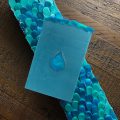

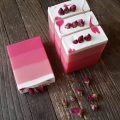
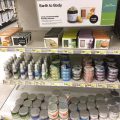
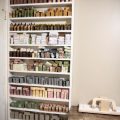
Hi! I reaaly do not understand the price soap worksheet at the fourth step. How do i have to do the counting or calculation?
What are you not understanding specifically? Let me know and I can offer some tips.
Thanks for taking the time to give us this info! I don’t enjoy plugging in the numbers, but I do enjoy having a profit in my melt and pour biz. It’s been going five years! Yay!
I so enjoy your blog and products.
Thanks again.
Oh that’s awesome Vickie, congratulations! Thanks for your sweet comment.
Hi, Thank you so much for writing this post. I do have a question. My overhead cost is 355.60.
In the example you have you divide it by how many bars of soap you made to get the amount to apply to each bar. However, what about someone who has an entire line of products
I have a shampoo, conditioner, hair oil and hair butter. I made 24 bottles of each product giving me a total of 96 bottles of products(24 shampoo,24 conditioner, 24 hair oil and 24 hair butter)
My question is do i add the overhead or under the costs to just one batch/product line or the entire line. So would i take the 355.60/24 for shampoo only? Or would I take 355.60/96 accounting for all products made? I’m sorry if this is a dumb question but I honestly don’t know the proper way to calculate overhead and apply to an entire line of products.
My fear is that if I did it just for the shampoo it’s such a high amount of money to be added to the shampoo. It would be like $14 bucks versus 3-4 bucks if I divided by the 96.
I’m not sure if you can help me, but if you can I’d truly appreciate it. Thank you so much!
No worries. Usually you’ll divide that overhead cost by all 96 products. The direct/labor costs will vary by each product, but the overhead will remain the same. You can always adjust those costs up if you find they’re not factoring in enough of your overhead.
What a wonderul very informative blog post..I can’t tell you how thankful I am. Now it has taken me a little time to plug all my actual numbers in,but I feel like I was back in grade school.(In a good way lol)
You gave us the basic equation now we know it ,we just have to apply it..Thank you sooo much for this!!
You’re welcome Johanna, glad to hear this post was helpful for you. 🙂
Hello
I want to calculate my melt and pour soaps can I get the price calculation I mean how can I get the accurate pricing for my soaps
And what we should consider as major things and what are minor things I’m in a starting stage of selling those so stuck with pricing
The post above has great tips for pricing your products! It goes over direct costs, indirect costs, labor, etc. 🙂
-Kelsey with Bramble Berry
wow, all I asked was how much approximately would one sell bath bombs for and I got a days worth of reading.
Do you a simple answer? Approx……..
There isn’t a simple answer because it depends on your material costs, labor, the market you’re in, etc. Once you have those costs figured out, you can apply that formula to all your products. 🙂
-Kelsey with Bramble Berry
Hi!,
This is a great article! I’ve always had trouble with trying to figure out how to calculate shipping & handling into my products. Any suggestions?
Thanks!
Brooke
That depends on how much you’re shipping, the weight, the cost, etc. This post talks more about that: https://www.soapqueen.com/bath-and-body-tutorials/tips-and-tricks/beginners-guide-to-packing-shipping-handmade-beauty-products/
-Kelsey with Bramble Berry
Hey Kelsey!,
Thanks for the reply. I should have been more specific and I see what you thought I meant. What I really mean is how do I calculate the shipping and handling on the products I’ve purchased from brambleberry in order to sell to my customers? I feel like I’m loosing money if I don’t do this bc it can be so expensive. For example: If I order 2lbs citric acid, 8oz heavenly honeysuckle FO, and 10 pounds of coconut oil and brambleberry charges me $20 to ship it to my house. I make my products, calculate the cost of my products to make each one but have no idea how to calculate that $20 shipping and handling fee that I was charged by brambleberry into my products. Does this make sense? Sorry if it’s confusing!
Thanks,
Brooke
Those are considered direct material costs, so you’ll want to factor those into the price of your products. Our shipping costs are based on weight and distance, so if the order is heavier or has a longer distance to travel it will be more pricey. I’m sorry about that. We know shipping costs are a big concern for our customers, so we’re currently looking into ways to address them. If you have any shipping questions, feel free to contact our customer service team at info(at)brambleberry(dot)com, 877-627-7883 or chat on BrambleBerry.com. They can help you find the best shipping option.
-Kelsey with Bramble Berry
Hi,
This is a great way to get going to know what my soaps are likely to cost however as a new and inexperienced soaper, in my country the best way to get known is through participating in exhibitions. I reached to the point where I know what my stall cost will be for each of my product however now I’m stuck as I don’t know under which head should I put this stall cost and how to do I calculate the cost of each soap. So basically I don’t know that at what price should I sell my each soap so that I cover all my cost and get profits. Please help.
Thanks very much.
The stall costs would likely fall under fixed overhead costs because they are essentially rent. You can double check with an accountant or tax consultant just to be sure though. They will have more information and can help you find out what to charge for your bars.
-Kelsey with Bramble Berry
Hello ! In France we also have to pay some laboratory tests unless we have a diploma in chemistry, pharmacy or medicine. The law makes it in obligation to deposit our formulas in laboratory for testing and make sure it’s safe. Also we have to declare it to the anti poison national center. The last one is free but one formula costs about 300€ to declare and get tested 🙁 I find this highly restrictive, it seems really complicated to start your own business…
I’m sorry about that Tam, that definitely sounds frustrating!
-Kelsey with Bramble Berry
How do you price the amount of essential oil you use per bar of soap? I currently use 1% per lb of soap equaling 4.54 g of essential oil. However, most essential oil when paid for comes in FL. I currently purchase 4 fl oz of essential oil. So with the hypothetical cost of 14.99 per 4 fl oz of essential oil how much does each gram or oz of essential oil cost?
Thanks!
I would recommend weighing out the essential oil when you get it! That way you know for sure how much it weighs and your calculations will be more precise. When you transfer the essential oil to another container, you can lose some. I would recommend asking the manufacturer for the weight of the bottle. That way you can weigh the essential oil in the bottle and subtract that weight so you don’t lose any oil. 🙂
-Kelsey with Bramble Berry
I was afraid you were going to say that..I am currently trying to figure out the weight of the essential oils I bought from you! 🙂 Should I email you to get that bottle weight, or do you have the weights somewhere?
We can provide those bottle weights for you. You can reach us at [email protected].
pricing worksheet work for body butters and scrubs as well that is pretty much what I make
Pricing worksheets are really nice to have! They help keep you organized. 🙂
-Kelsey with Bramble Berry
Someone mentioned a PDF copy of this, where can i find this
We don’t have a PDF version of this, sorry. You can print it out though to keep it handy! You can also save it as a PDF by clicking “Print” and changing the printer to “Save as PDF.” 🙂
-Kelsey with Bramble Berry
Hello, Thanks for the great article, by the way, I would like to save this as a PDF file, but I couldn’t find any print button.
You can click File and then Print, or hit ctrl+P on your keyboard. That will pop up print options. 🙂
-Kelsey with Bramble Berry
Hi, I just want to ask, since you mentioned this one:
‘we added shelving, cabinets, a portable single-burner range, and bought new equipment. All together, this added up to about $400.00.’
you call this as fixed overhead cost, but what is it called specifically?
( there somewhat different from the rent, electricity, packaging since it’s used in monthly basis, but these equipment are used for a couple of years)
and question is how do you compute the equipment, shelves, single burner range etc.
Thank you so much!
That is a great question Dot! Equipment like shelving and ranges are considered fixed (indirect costs). They’re basically considered part of your soaping space. That’s because you’re not purchasing them over and over for your bars of soap if that makes sense! 🙂
-Kelsey with Bramble Berry
Thank you very much for this blog as well as the .pdf to help calculate.
My question is: What is a good weight range for fresh soap?
You state for this blog that you cut your bars at 3.8oz. This means after ~15% weight loss that final bar is ~3.2oz. A bar of Dial is 4oz after cure.
I’ve searched the web and have seen bar sizes (fresh cut) from 3oz up to an 1″ or more (loaf molds) and have no real good idea how to cut my bars.
I know most will say “it’s personal preference” and please, don’t. Yes, to an extent it is. At the same time, isn’t there a “good average” for bar size?
Hi Allyson!
An average weight is usually around 4 ounces. I know you asked me not to say so, but it is a lot of personal preference! Some people prefer smaller bars, some people prefer larger. Our bars usually weigh right around 4 ounces. 🙂
-Kelsey with Bramble Berry
Sorry I took so long to reply.
Thank you Kelsey! It is helpful to know a good average weight. Now I need to feel out my areas to know how much to offer them for. Have a splendid Fool’s Day!
You’re welcome! If you have any other questions let us know. We’re happy to help. 🙂
-Kelsey with Bramble Berry
I want to calculate my melt and pour soaps can you help me out please
Thanks for doing this. I’ve broken my costs down per bar but I haven’t approached how much it costs for packaging/labeling just yet (I haven’t made a final decision just yet). I do need to include costs for soap space, water etc. Lots of work but it must be done! Thanks again~T
You’re welcome Tonya, glad the post was helpful for you! 🙂
-Kelsey with Bramble Berry
Thank you for this! I have started breaking down everything, and looking into ways to calculate this, so this is perfect timing! I am not selling at the moment but have had people offer to pay me (which I will let them do once I get better at what I’m doing!), and my husband suggested figuring everything out just in case. 🙂 I appreciate this post!
You’re welcome Elizabeth, glad you found the post helpful! 🙂
-Kelsey with Bramble Berry
This is great info! Though obviously geared toward the more truly “business” soap people. I (as probably many do) make soap in my home. I don’t factor in rent, utilities, nor even labor into my pricing – the cost per unit would be something so outrageous that no one would pay if I were to try that. I know how much each batch costs, and that cost will vary greatly depending on the materials and fragrances used, and how much it cost me at the time of purchase, and unfortunately the cost of shipping has to be included in just about everything. So I just have a general flat fee per bar/item based on what I’ve put into it and what I believe to be a reasonable profit, and to be somewhat in line with what others are charging in my area.
How products are priced will vary quite a bit! It depends on the size of your business, where you soap, the market you’re in, etc. Once you find a method that works for you, definitely stick with it! Thanks for reading Michael. 🙂
-Kelsey with Bramble Berry